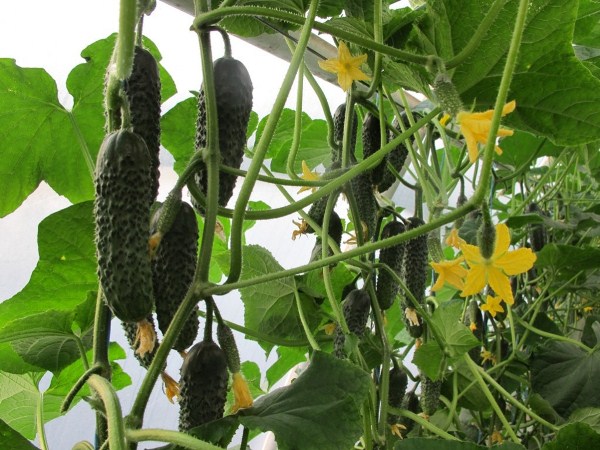Each type of cucumber is characterized by characteristics that determine the characteristics of care during cultivation. Parthenkorpichesky hybrid Director F1 bred by the Dutch experts of the company Nunhems B.V. The variety entered the State Register of Plants of the Russian Federation in 2013. In a short time, the cucumber Director gained popularity among summer residents, in farms and agro-complexes. The description of this variety is given below.
Table of contents
Description and characteristics of the cucumber variety Director F1
Indeterminantny grade has an attractive appearance. Cucumber shrub medium - tall, medium - branched with dark green leaves of small size. Side shoots are well developed. The plant dominates the female type of flowering with the formation of bundle ovaries.
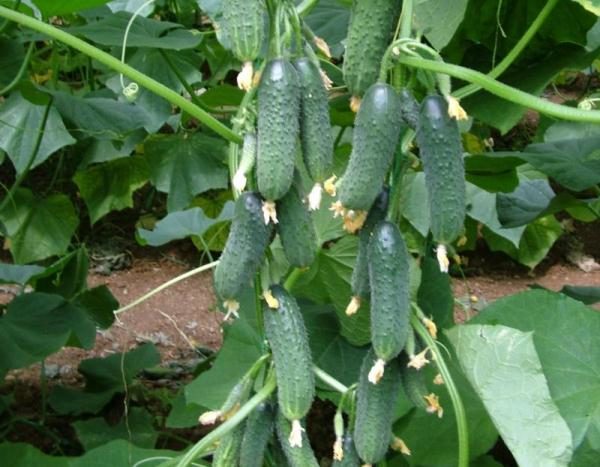
Cucumber cylindrical shape with a fine-celled surface. The size of fruits is 12-13 cm, diameter is 3-4 cm. The average weight of Zelentsi is 65-85 g. Cucumbers with thin skin, tasty pulp, small seeds, without voids and signs of bitterness.
The hybrid of the early ripening period, which is 42- 45 days, can be used for the second turn. Suitable for cultivation in the greenhouse and in the open field.
Commercial grade with good transportability. The average yield reaches 300-320 centners per hectare.
Advantages and disadvantages
The advantages of the hybrid are characterized by:
- high yield;
- good taste properties;
- aesthetic presentation;
- resistant to powdery mildew and diseases;
- opportunity harvest twice for the season;
- unpretentiousness in care, shade tolerance;
- tolerance to temperature drops;
- growing, both in open and protected ground.
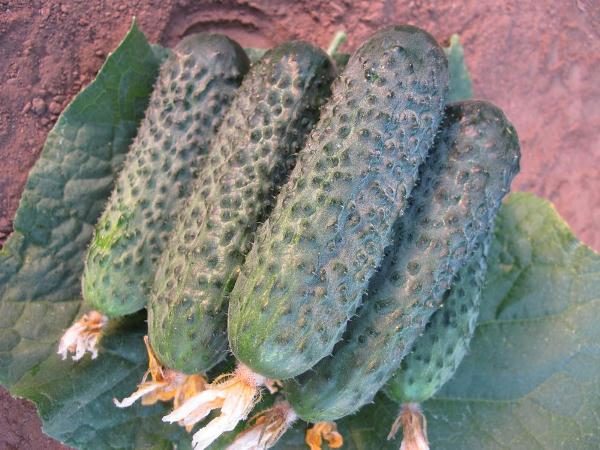
The grade has no specific shortcomings. The downside may be the relatively high price of seeds.
Soil for planting
The stereotype of soil preparation for planting hybrids depends on the location - whether it is open ground or greenhouse.
Open ground
Long-term experience of gardeners says to ensure a decent crop of cucumbers, need to prepare a place for planting in the fall.
If the soil is heavy, arrange a bulk bed.
The stages of work for multi-layered beds include the following design:
- 1 layer - drainage. This is grass, straw, twigs that are laid in a dug trench to a depth of 50 cm. Drainage tamped;
- 2 layer - manure. It is necessary to leave the garden in this form until spring;
- 3 layer - fertile soil, humus or compost. It is laid on top of manure in early May;
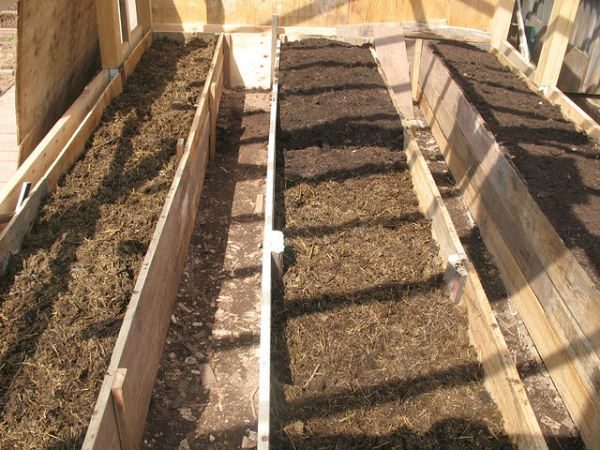
Then you need to install the frame of the arcs and pull the material type spunbond. Seeds need to be sown through 5-6 days Manure, reheating, will release heat, and seedlings will receive all the trace elements necessary for growth.
You can arrange such a bed and spring. In this case, 1 liter of ash and 100 grams of nitrophosphate (nitrogen, phosphorus, potassium) must be added to 1 m2 of manure surface. Lay a layer of humus, cover with foil, tightly pressed with boards. Leave it for a week.
Closed ground
In the spring in the greenhouse you need to remove the top layer of soil, make manure thick 30-45 cm. Spill it with hot water so that it burns out faster. A few days later put a layer of humus, shed 0.05% solution of potassium permanganate for disinfection.
Landing technology
The most popular method of growing cucumbers - sowing seeds. You can sow dry seeds. To speed up the process, it is recommended to soak them in an aqueous solution of a stimulator or a solution of ash for several hours. Hacked seeds are sown in the soil according to the scheme 50*50 see depth 3-4 cm.
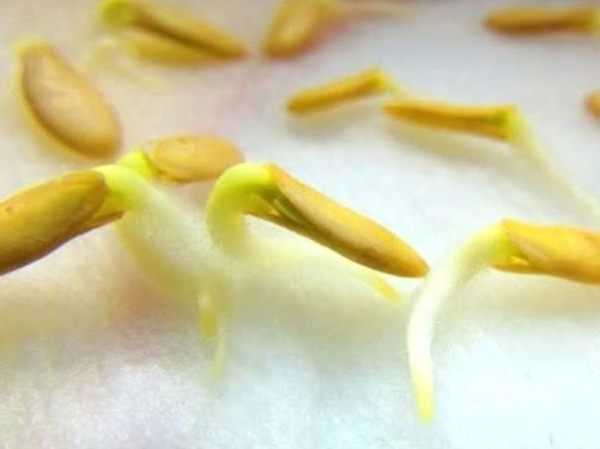
The best landing time is the last decade of April - the beginning of May. The optimum temperature of the soil should be + 14-15 degrees, air - 22 degrees.
For the early harvest of greenhouse hybrid it is better to use the seedling method. The principles for obtaining quality seedlings are as follows:
- containers for seedlings must be at least 8 * 8 cm;
- pots filled ready soil mix, disinfected with a pink solution of potassium permanganate;
- seeds are planted to a depth of 2 cm;
- after the appearance of the first true leaf make complex fertilizer Kemira-lux;
- before disembarking to a permanent place produce foliar treatment biostimulant growth and root formation.
Rules of care, disease prevention
Care for cucumber bushes "Director F1" is dictated by the agrotechnical rules for the care of this crop. Their goal is to obtain a high quality crop.
The following basic measures are mandatory:
- Watering plants produce every evening with warm water, preventing the drying of the soil;
- Twice a month fertilize with organic fertilizers - infusion of chicken manure or cow manure. In their absence, you need to apply superphosphate, urea, ammonium nitrate;
- Follows regularly conduct foliar dressing complex microelements for vegetable crops;
- To form a plant pinch above the eighth leaf. Extra side shoots and antennae are recommended to be systematically removed;
- As needed surface soil loosening and timely remove weeds.
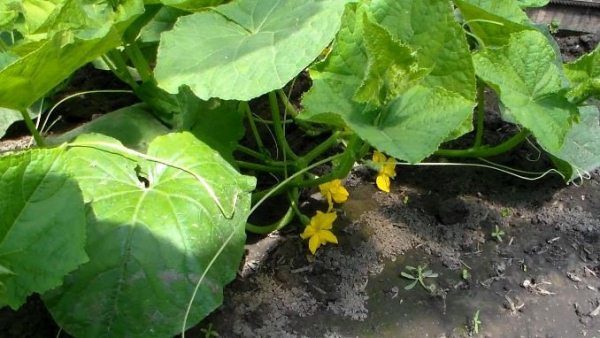
It would not be amiss to recall three typical mistakes in the care of plants. First, when airing it is impossible to allow drafts and a sharp change in temperature in the greenhouse. Secondly, over-irrigation is very harmful to plantings, especially with cold water. The third blunder is the inept formation of a bush.
Breeders, authors of the F1 Director variety, guarantee a high degree of disease resistance of the hybrid.
Harvesting and Storage
Overgrown cucumbers prevent the growth of new ones. During the mass fruiting, it is necessary to collect greenhouses every day, otherwise they will outgrow and lose their presentation. The collection is best done early in the morning or in the evening. Zelentsy cut with a knife, not twisting the whip. The collected fruits are placed in a cool place.
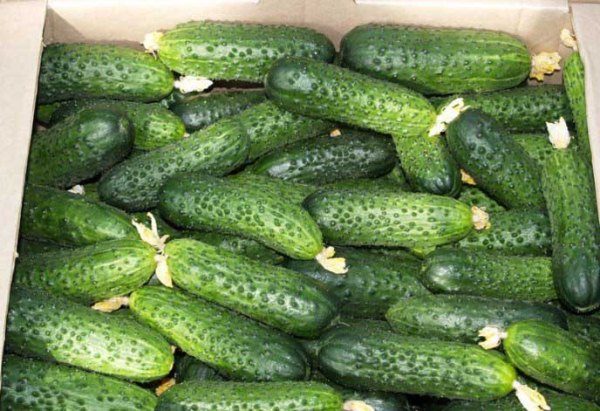
Their shelf life is very short. You can extend it for a week if you wrap fresh fruit in polyethylene and place it in a refrigerator or cellar. The only way to save cucumbers for the winter is canning.
Conclusion
In the reviews, gardeners give a positive description of the hybrid. The plant is unpretentious, has a high yield. Adverse factors in the form of irregular irrigation, temperature drops, diseases slightly affect the quality of the hybrid crop F1 Director F1. This explains its popularity among modern gardeners.
